Original 1951 Royal Air Force (R.A.F.) "EUROPE" Defense & Deterrence Consol Navigation Chart Air Map*



















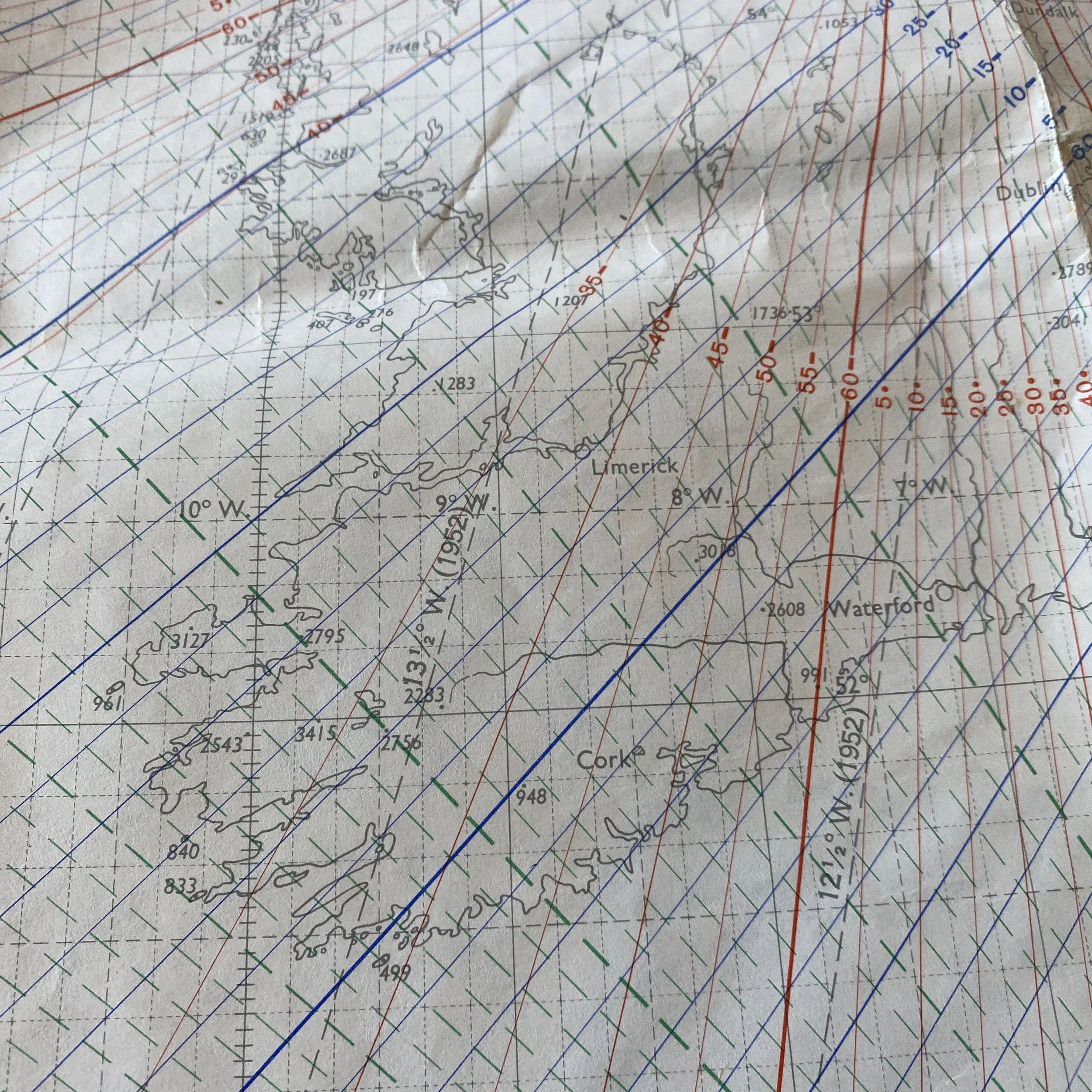



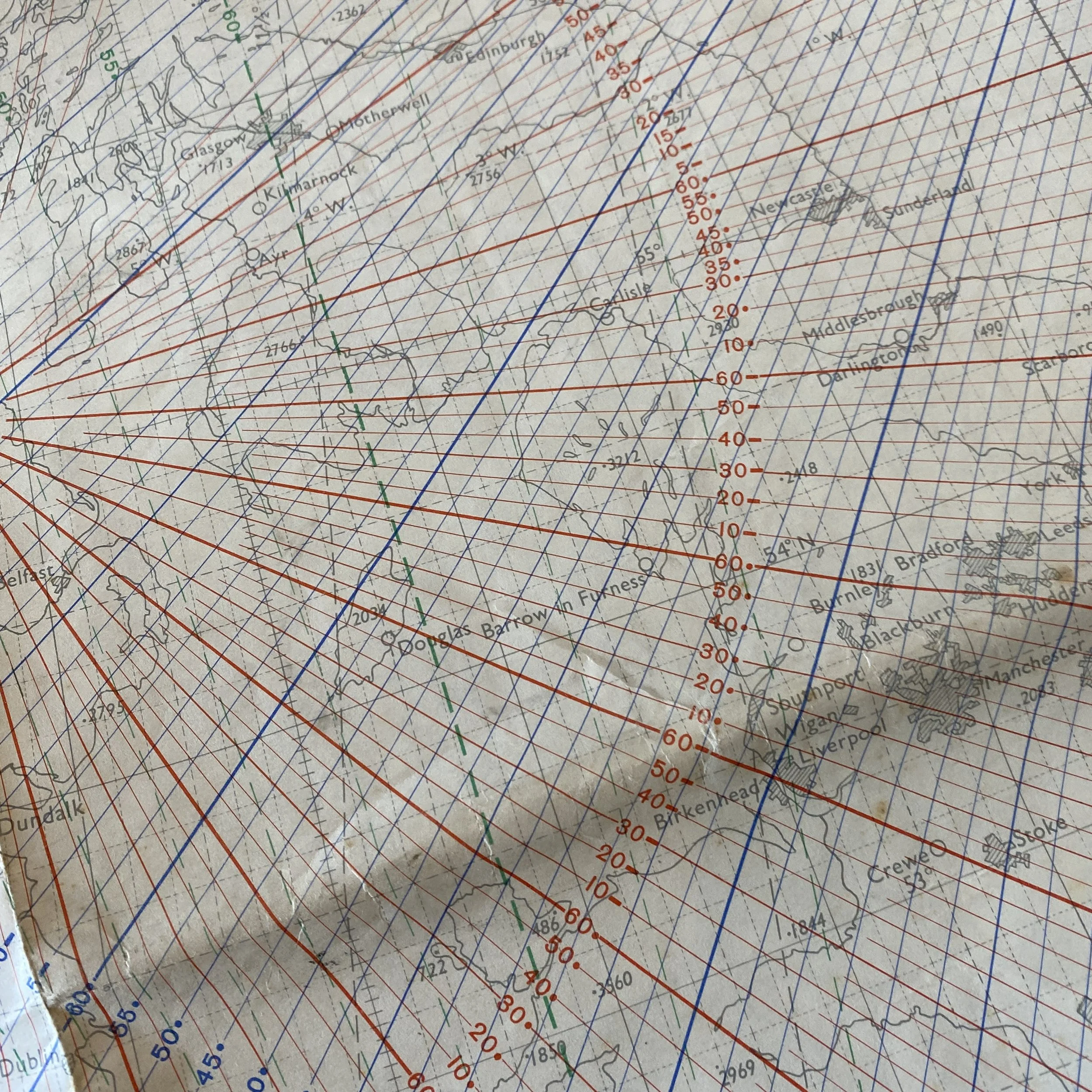
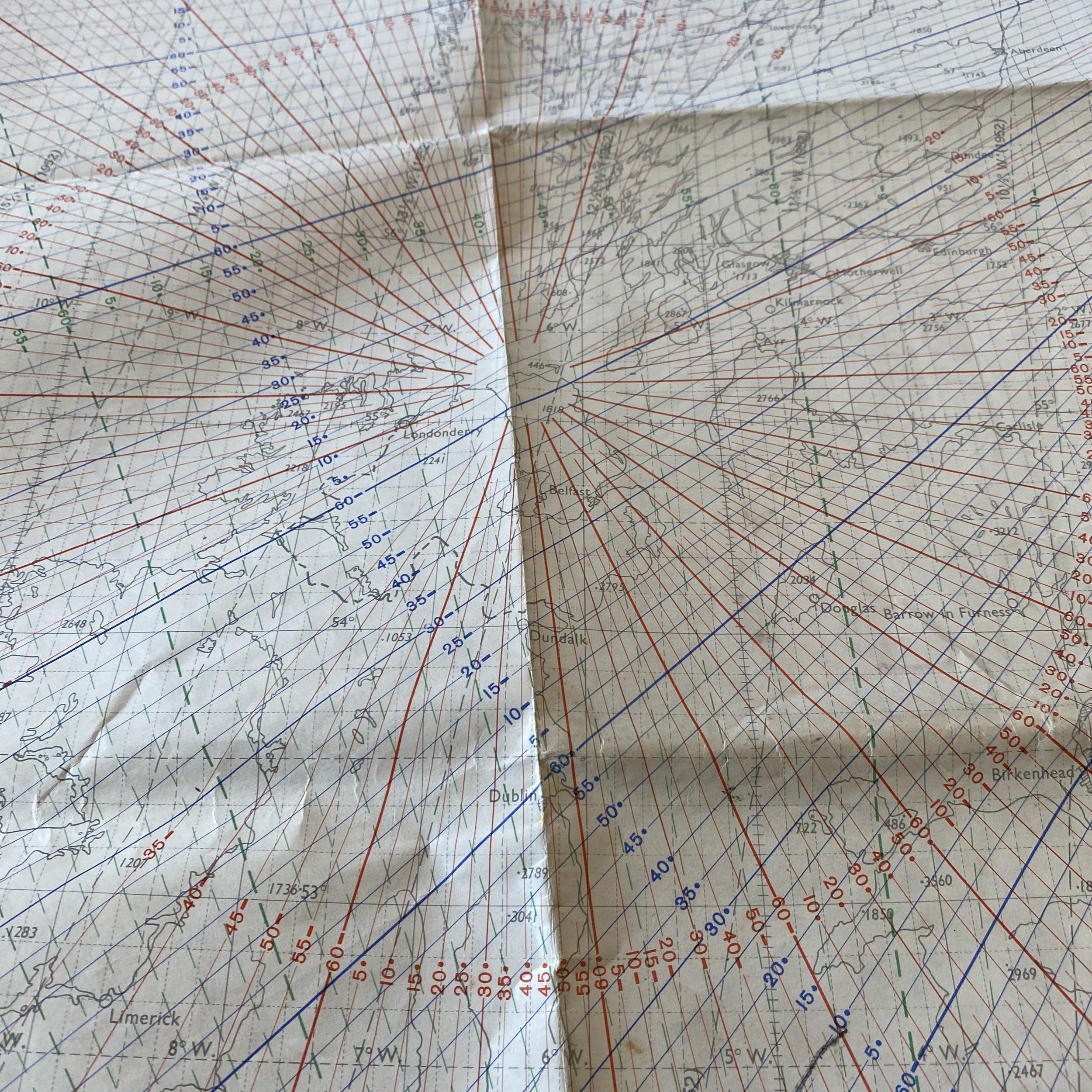
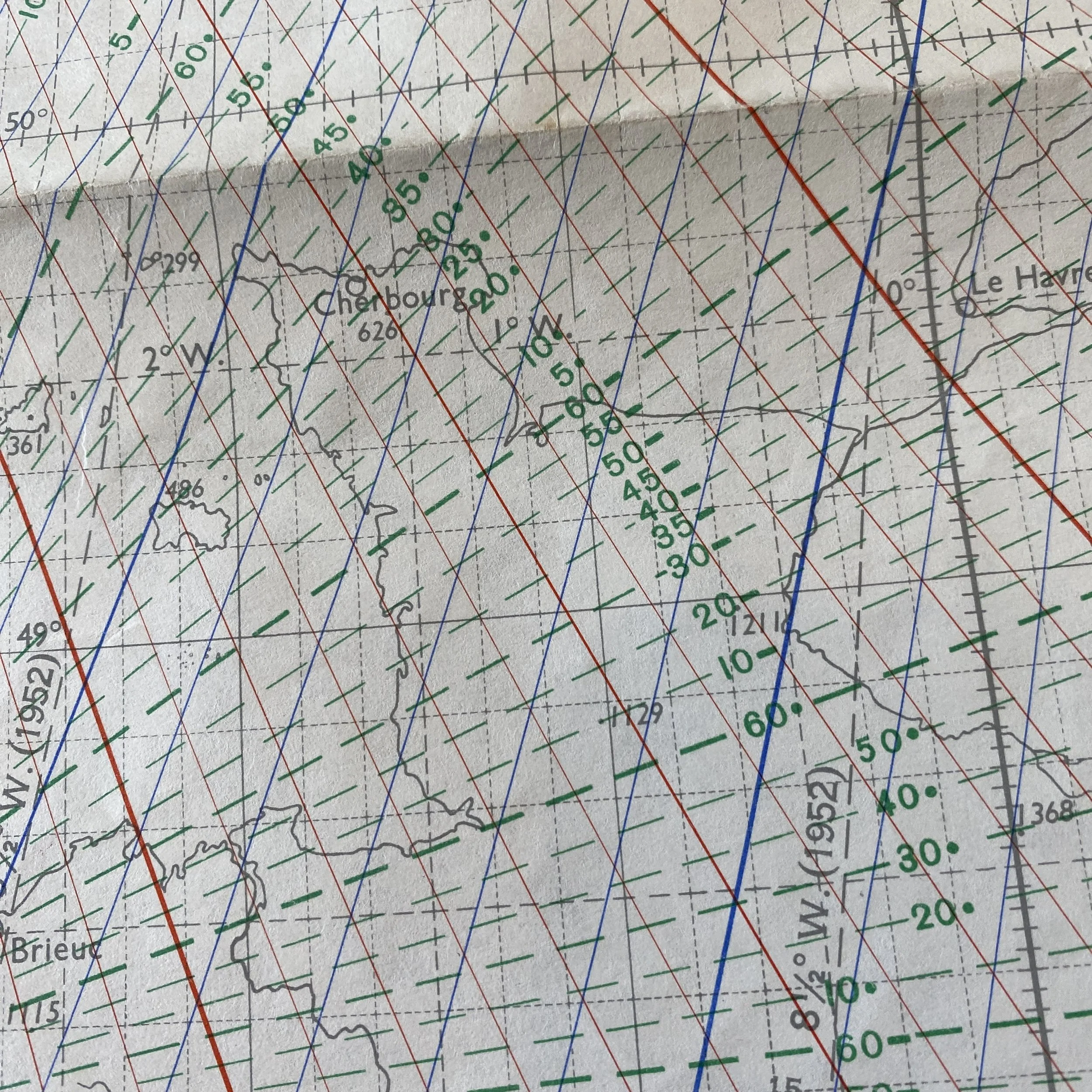



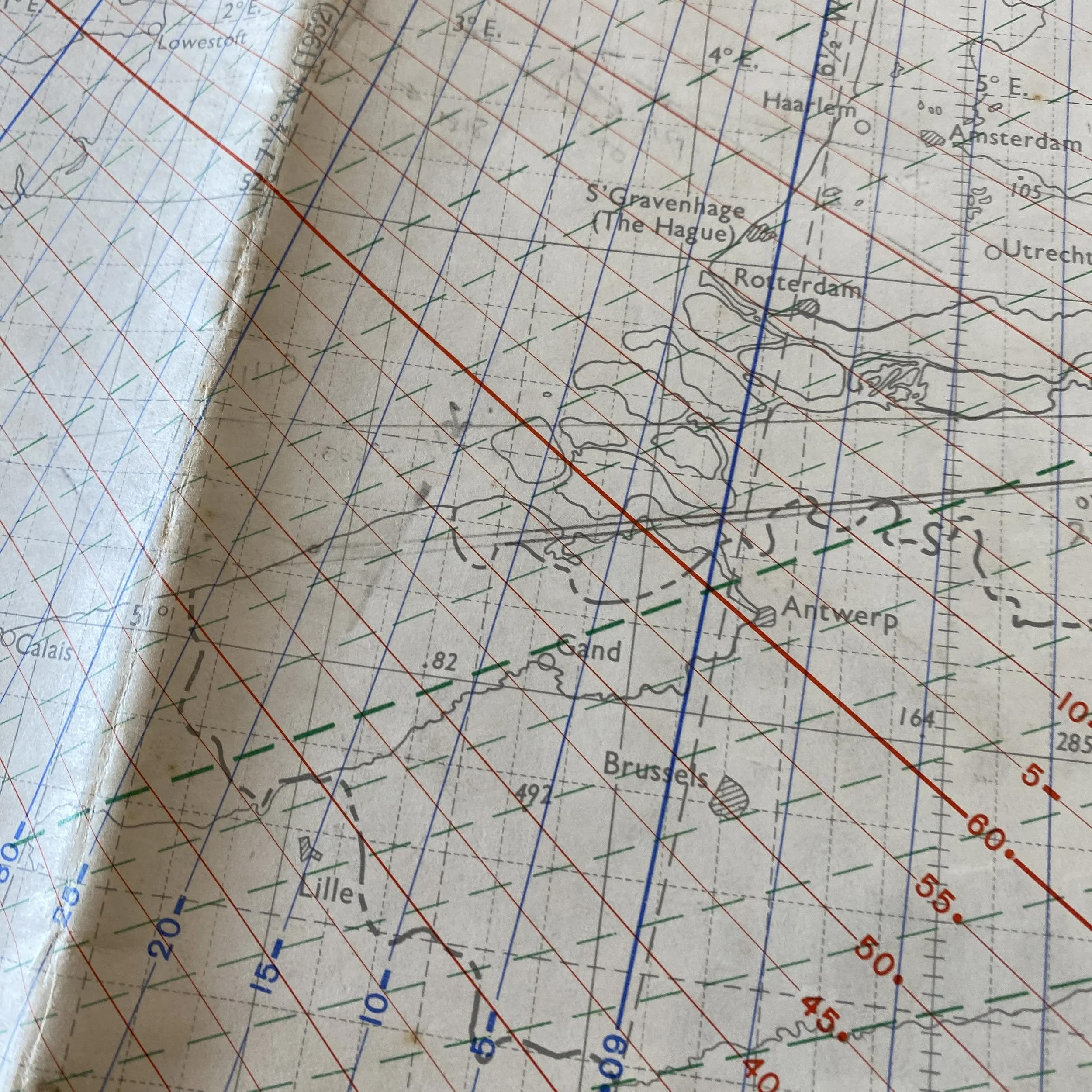

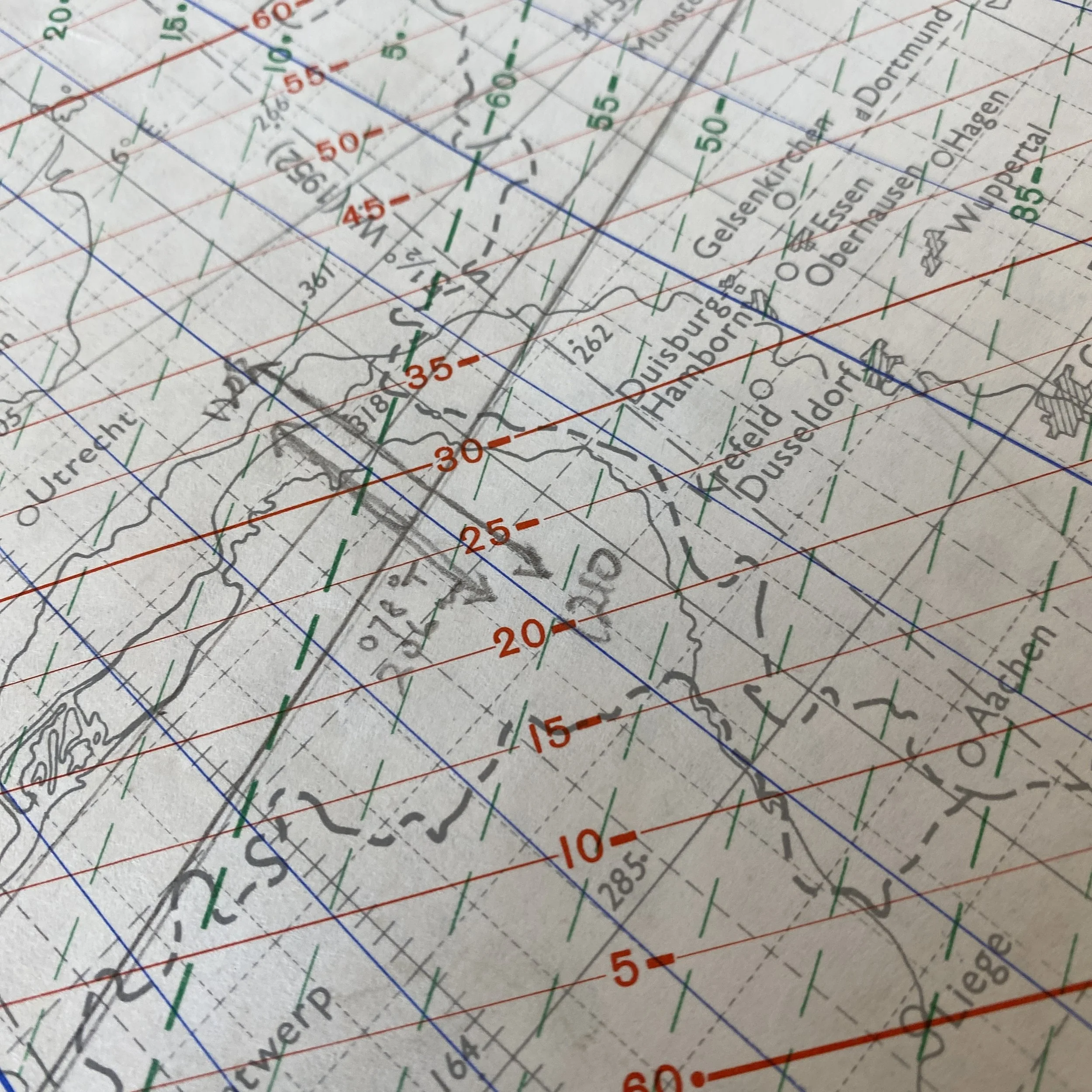
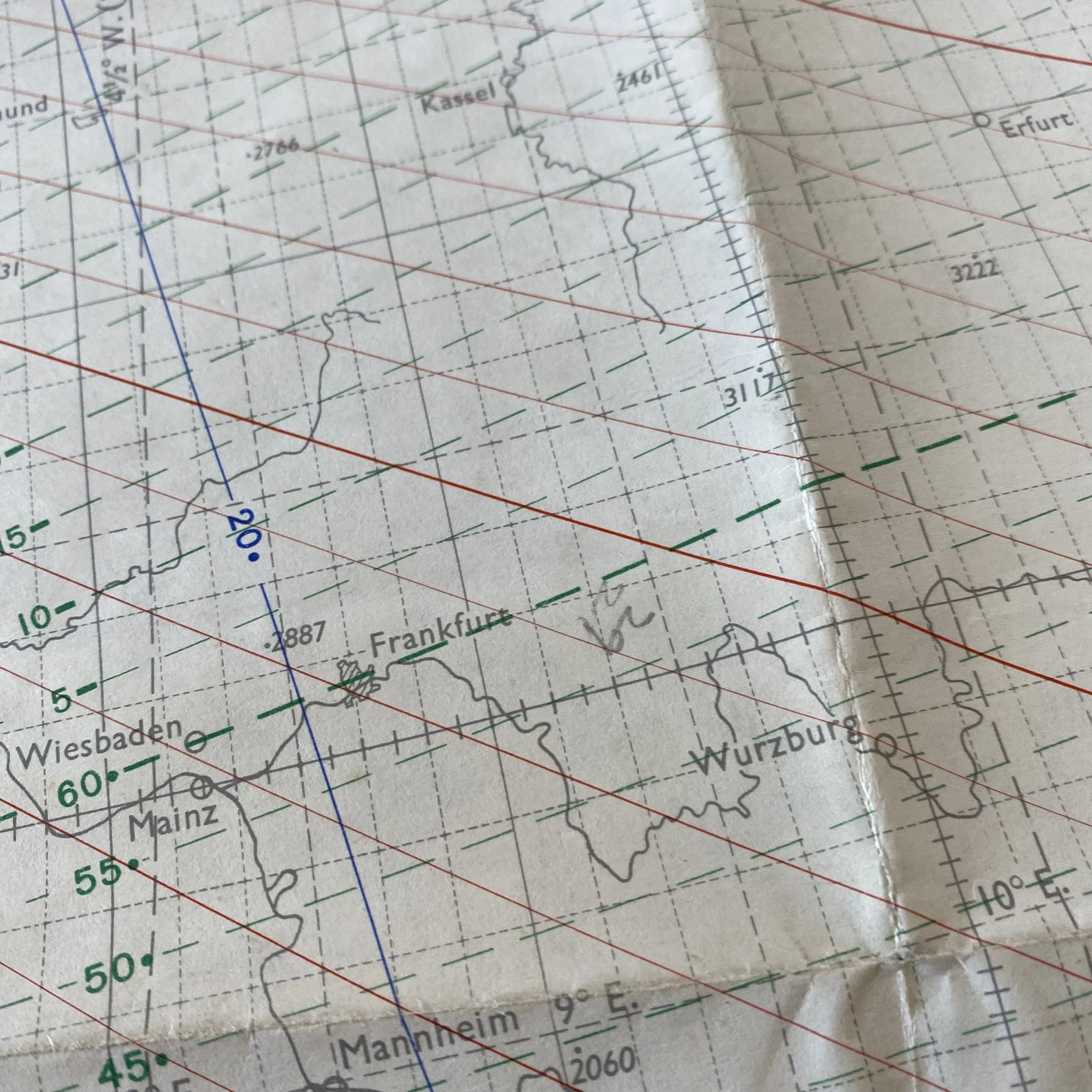
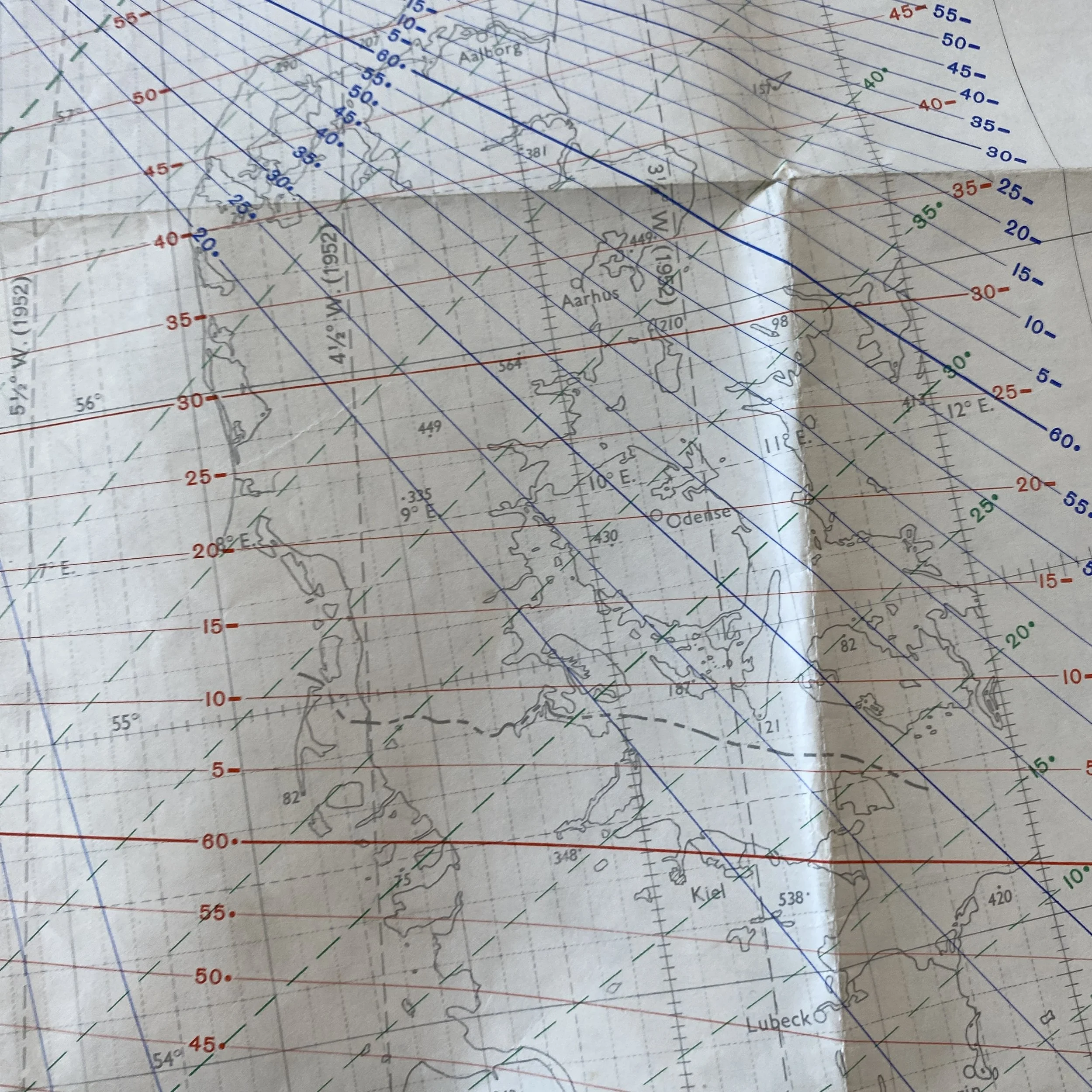



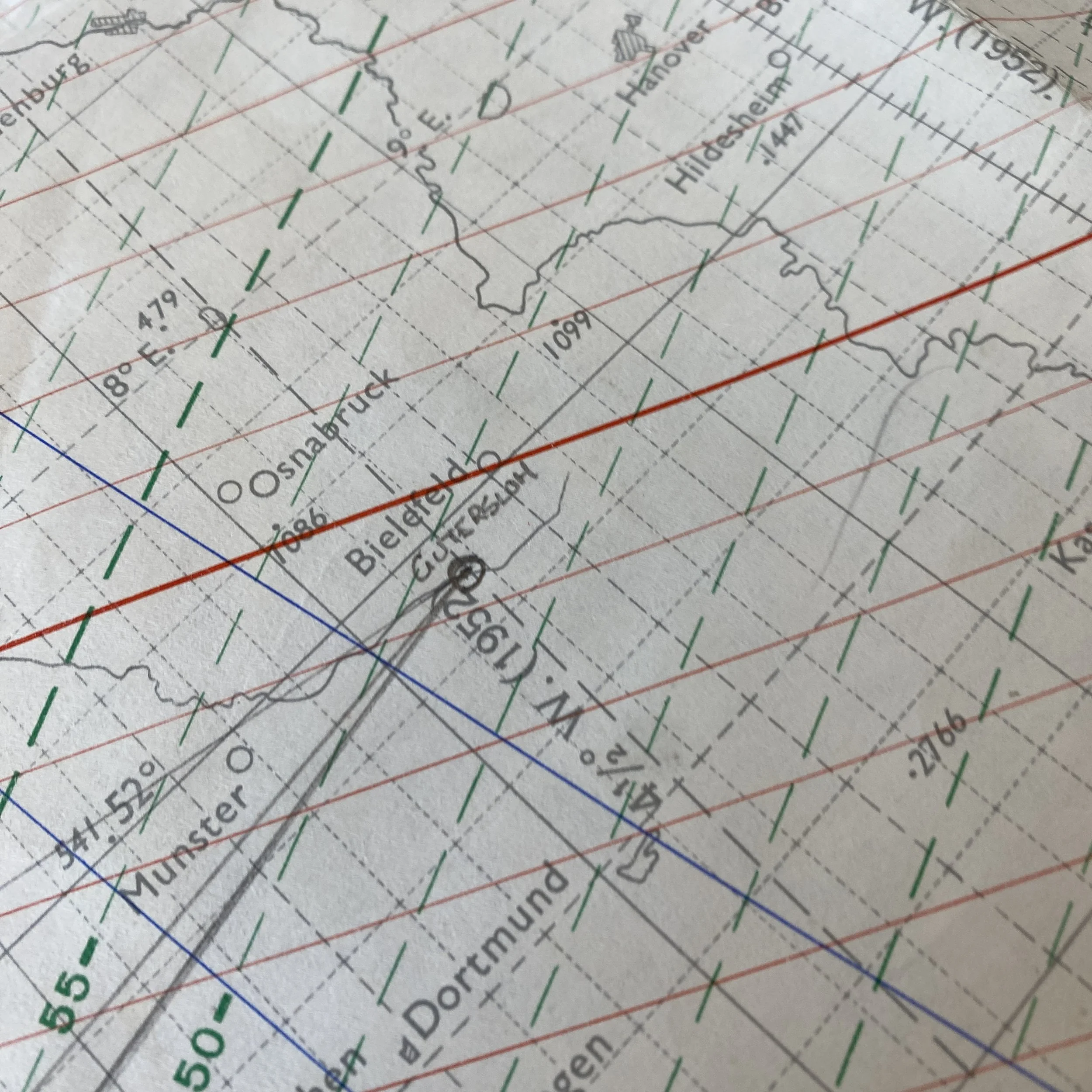
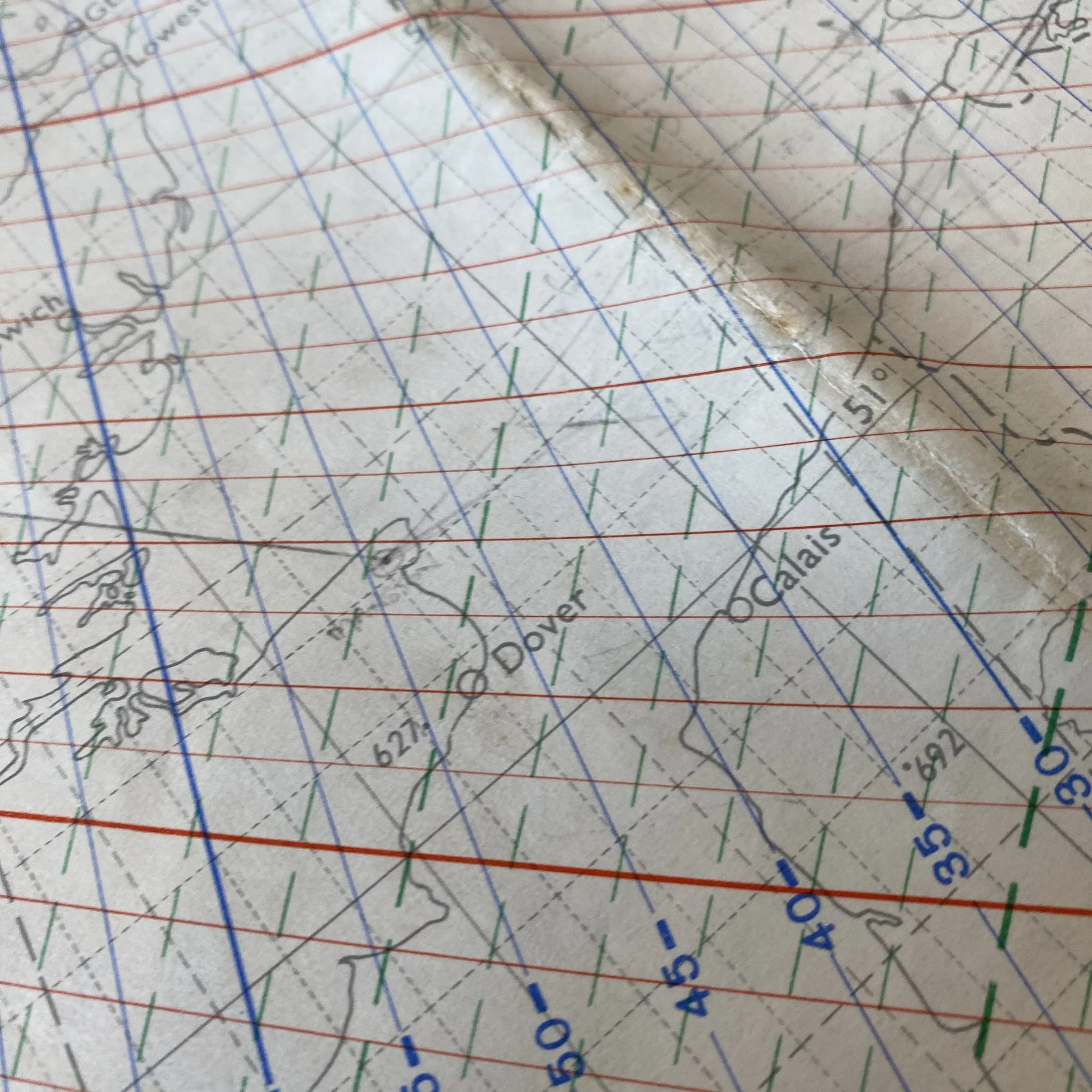
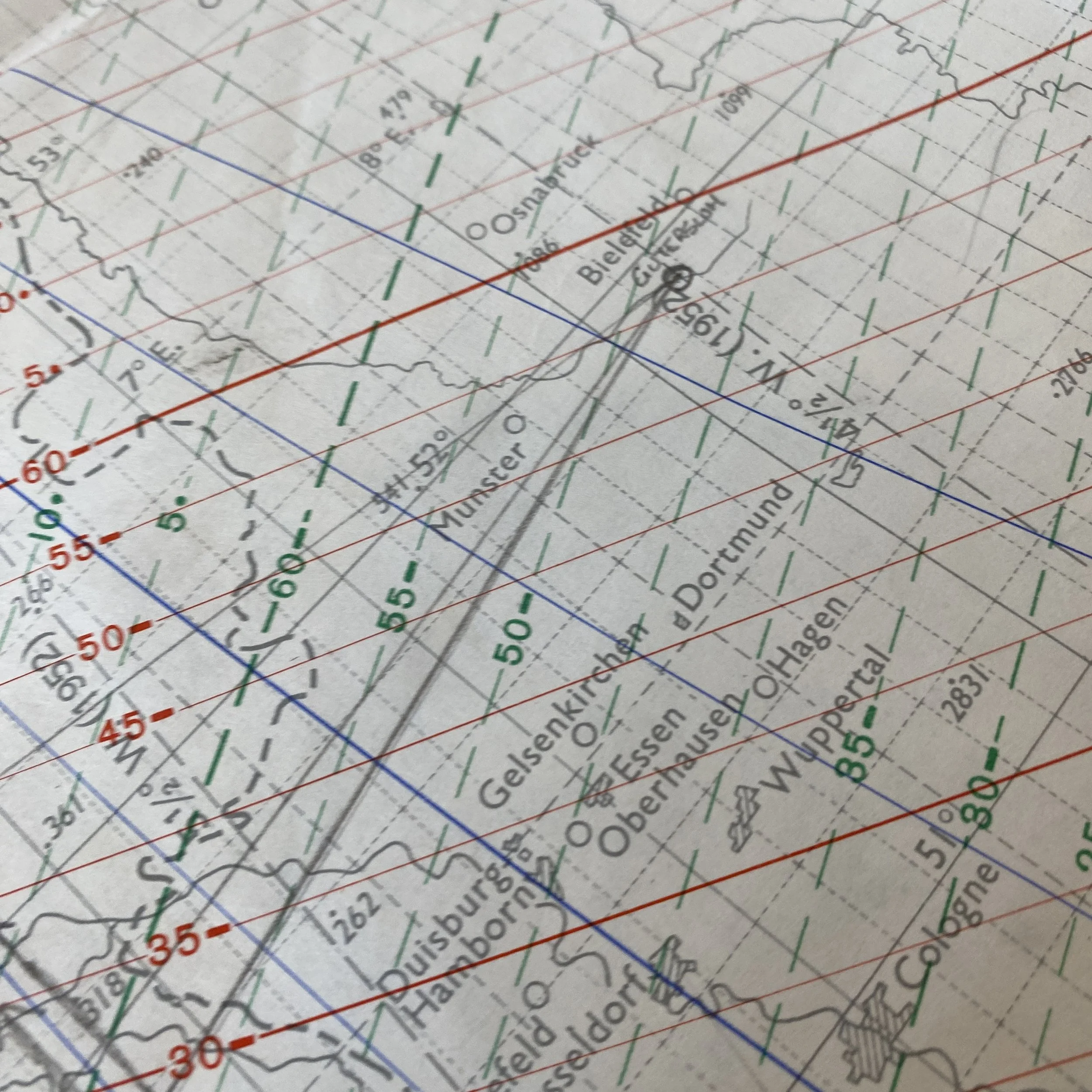
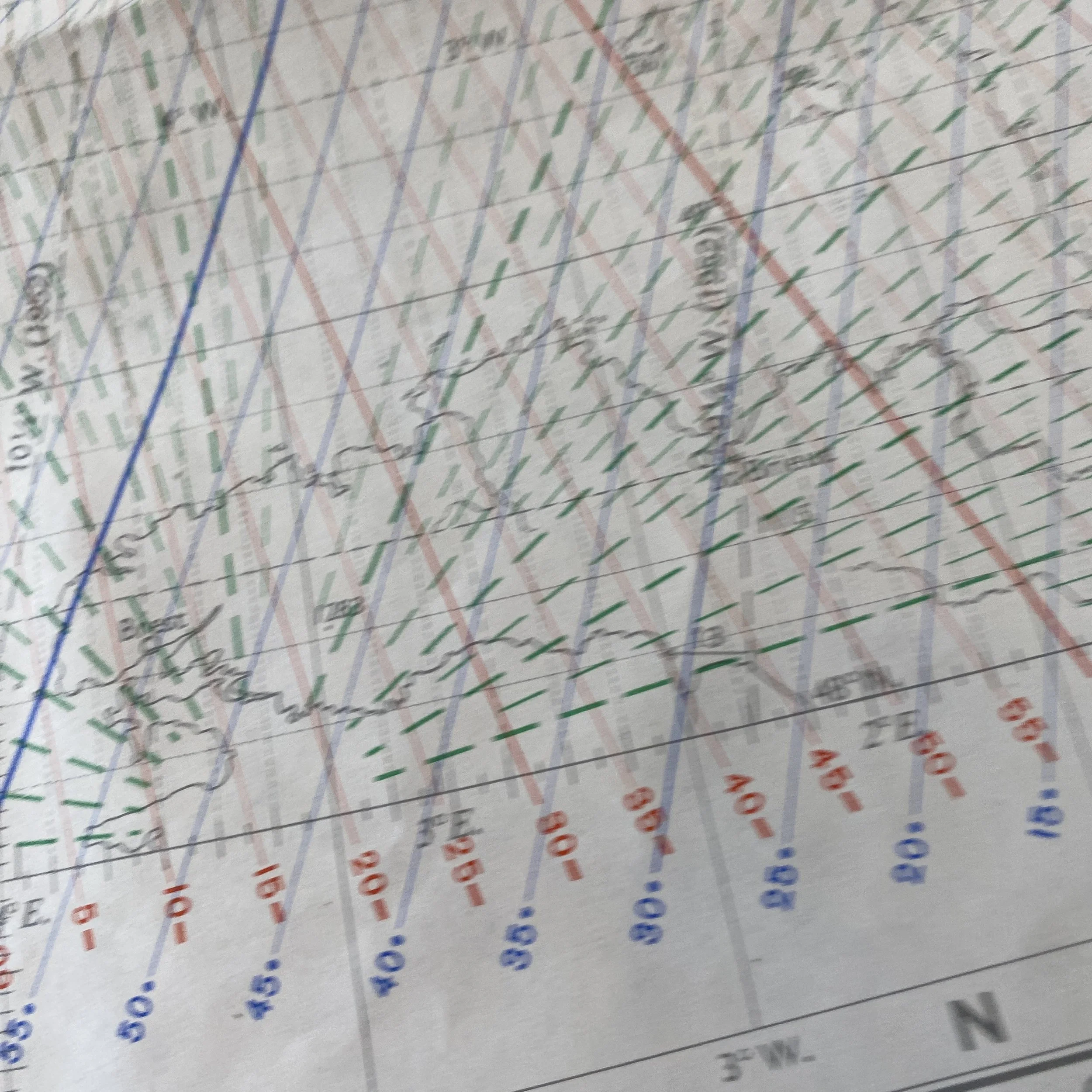
Original 1951 Royal Air Force (R.A.F.) "EUROPE" Defense & Deterrence Consol Navigation Chart Air Map*
Comes with C.O.A.
*This Royal Air Force map shows mission markings and flight paths over ANTWERP, DOVER, UTRECHT, & BIDLEFELD.
This rare and museum-grade Royal Air Force (R.A.F.) Consol Navigation Chart is a rare R.A.F. SECOND EDITION printed by the War Office in 1951. This orthomorphic projection scale was a very advanced navigation map was used by the Royal Air Force while operating air missions over the United Kingdom, the English Channel, France, Germany, etc.
Gee was a radio navigation system that used signals from two or more ground-based transmitters to determine the precise location of an aircraft. It was developed to address the limitations of earlier navigation methods, particularly in situations where accuracy was crucial, such as during military operations. The system worked by comparing the time delays between signals received from different transmitters. The intersecting lines of position derived from these time delays allowed navigators to pinpoint the aircraft's location. Gee provided a significant improvement in accuracy over earlier systems, making it an important tool for the RAF. The term "Gee Lattice Chart" might refer to the navigational charts used in conjunction with the Gee system. These charts displayed the grid lines or lattice that corresponded to the intersecting lines of position generated by the Gee signals. The navigators on board the aircraft would use these charts to determine their precise location and plot their course. The lattice on the charts represented the hyperbolic lines of position generated by the time differences between the signals from different transmitters. By intersecting these lines on the chart, navigators could accurately determine the aircraft's position.
In 1951, the Royal Air Force (RAF) played a crucial role in the geopolitical landscape of the post-World War II era. The world was still grappling with the aftermath of the war, and the RAF found itself engaged in a variety of missions and objectives that reflected the complex and dynamic nature of global affairs during that period.
One of the primary missions of the RAF in 1951 was the defense of the United Kingdom and its interests. The Cold War was in full swing, and the threat of a Soviet invasion or aggression loomed large. The RAF was tasked with maintaining a robust air defense system to safeguard British airspace. This involved the constant monitoring of the skies, rapid response capabilities, and the deployment of cutting-edge aircraft equipped with the latest technology.
As a part of its defense mission, the RAF was also actively involved in the newly formed North Atlantic Treaty Organization (NATO). The alliance was established in 1949 as a collective defense against the Soviet Union and its potential expansion into Western Europe. The RAF's role within NATO included contributing to the overall air defense capabilities of the alliance, participating in joint exercises, and coordinating strategies with other member nations.
Beyond the borders of the United Kingdom, the RAF was engaged in various overseas missions. The British Empire was undergoing a period of transformation, with colonies seeking independence and the geopolitical landscape shifting. The RAF played a pivotal role in supporting British interests and maintaining stability in different regions. This involved not only strategic air power but also tactical operations in support of ground forces.
During the Korean War (1950-1953), the RAF participated as part of the United Nations forces. The conflict, sparked by the North Korean invasion of South Korea, saw the RAF deploying aircraft and personnel to contribute to the air campaign. British aircraft, such as the Gloster Meteor, were involved in air-to-air combat and ground attack missions. The Korean War highlighted the RAF's adaptability and its ability to project power far beyond the borders of the United Kingdom.
The RAF's reconnaissance capabilities were also in high demand during this period. The intelligence gathered through aerial reconnaissance was crucial for understanding the activities of potential adversaries and making informed strategic decisions. The use of high-altitude reconnaissance aircraft, such as the English Electric Canberra, allowed the RAF to monitor areas of interest without entering hostile airspace.
Furthermore, the RAF played a key role in the development of nuclear deterrence. The Cold War era was characterized by the nuclear arms race between the United States and the Soviet Union, and the United Kingdom, as a nuclear power, relied on the RAF's V-bomber force for its nuclear deterrent. These bombers, including the Vickers Valiant, were equipped with nuclear weapons and formed a critical component of the UK's strategic defense posture.
In summary, the Royal Air Force in 1951 was tasked with a diverse set of missions and objectives that reflected the complex geopolitical landscape of the time. From the defense of the United Kingdom and participation in NATO to involvement in overseas conflicts like the Korean War, the RAF played a vital role in shaping the global order and safeguarding British interests. The adaptability, technological prowess, and strategic vision of the RAF during this period were instrumental in maintaining peace and stability in a world still reeling from the effects of World War II.